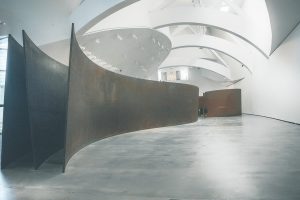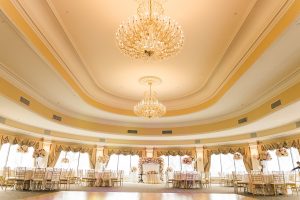Cold-formed steel has taken the industry by storm. Even though most of us are no stranger to cold-formed steel and all of its advantages, we continuously learn how to use this material to give the structure increased personality, make the building sturdier and safer, and save the project money.
Actually, the more we learn about cold-formed steel, the more this material impresses us with its phenomenal capabilities. Let’s think outside the box from the normal conditions when one might utilize cold-formed steel framing, and in this blog let’s focus on satisfying unique framing situations with light steel framing products. You might be surprised to learn that cold-formed steel can be a very dependable material for countless framing conditions.
What is Cold-Formed Steel?
Cold-formed steel is a framing and structural material. It is commonly used for interior and exterior walls, and also for the primary framing in low-rise and mid-rise structures. For most construction crews and structural engineers who plan the design and concept of buildings, they are very familiar with the ingenuity of cold-formed steel, and have a strong understanding of how to utilize it to construct exceptional structures.
Cold-formed steel is exactly that – sheet steel that is formed cold into various shapes (no heat is involved). It is sometimes also referred to as light-steel framing, and can be rolled into various structural pieces by a qualified manufacturer. Examples are –
- Studs
- Joists
- Headers
- Angles
- Trusses
- Jacks
The thickness of the material and the overall use can vary. There are also specific qualifications and regulations for the use of cold-formed steel. In the U.S., we turn to the American Iron and Steel Institute for guidance on how to use this material, and to understand the boundaries of cold-formed steel framing. The referenced guideline tells us load capacity, limitations and so much more. Plus, design software is readily available at the industry’s fingertips to streamline each cold-formed steel design, whether it’s for curtain-wall, load bearing or just for aesthetics.
Cold-formed steel can also reduce construction costs since it is more labor-friendly, adaptable, and sustainable than many other materials. Plus, cold-formed steel also often offers the possibility for lower insurance and maintenance costs due to it being non-combustible, and resistant to mold, corrosion, and vermin.
Cold-formed steel has versatility beyond what most of us can even imagine… here are some additional ways that this material can make an architect’s unique dreams a reality.
1. Add Impressive Volume
If you want to open up a space and make it distinctive and glorious, you add volume. You see volumetric designs in places like libraries, universities, performing art auditoriums and even museums.
When you see a large and magnificent structure with a lot of open space and volume, know that this look was likely created with cold-formed steel. In formations like this, the architect relies on the flexibility of light steel framing, because wood and concrete simply won’t provide the means to create such beautiful volume.
Yet, cold-formed steel can accommodate the voluminous design since it can be formed into unique shapes. Picture oblique, trapezoid, dome, triangles, and more can be worked into the shape and structure of the building to give it a flawless and unique design using CFS.
2. Beautify with Long Spans
We’ve seen cold-formed steel being used to accommodate spans in spaces that are up to 25,000 square feet of open space. These long spans not only add a touch of beauty to an otherwise simple structural design, they are functional when the need is present to create a large, uninterrupted space. Cold-formed steel provides the strength and maneuverability to construct these types of spans economically and safely.
Projects that have long spans are typically buildings like churches, event centers, and banquet halls. Reference the standards that allow for this type of design.
3. Pump up the Aesthetics
Cold-formed steel is also suitable when you want to add aesthetic features to a space. It is the versatility of the material that really makes the difference. An expanded overhang is a good example of an aesthetic feature that is made possible by cold-formed steel.
The challenge with some aesthetic features is that you must be mindful of the load allowances in order to utilize cold-formed steel. However, for some portions of the structure many opportunities will exist to pump up the aesthetics in order to give buildings a unique design that sets it apart from other structures like it.
Consider the aesthetics on hotels, complexes, casinos, concert halls, and opera houses… there’s a good chance that if you were to peel back the layers on the aesthetic features, you’d find cold-formed steel is responsible for the shape and design.
Conclusion
Unique structures all over the world have utilized cold-formed steel framing to perfect the overall design and look of the building. Other materials can’t hold a candle to what light steel framing can do for your building in terms of volume, spans, and aesthetics. With cold-formed steel you are using a sustainable product that not only can save your project big money in the long run, but will also give your job charisma and personality that is as unique as you are.





Recent Comments